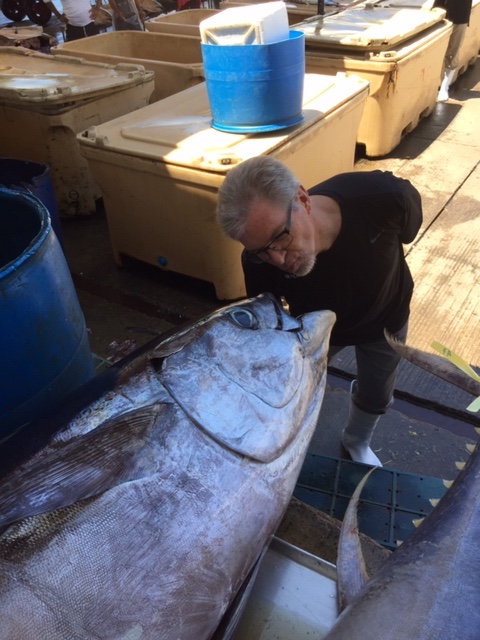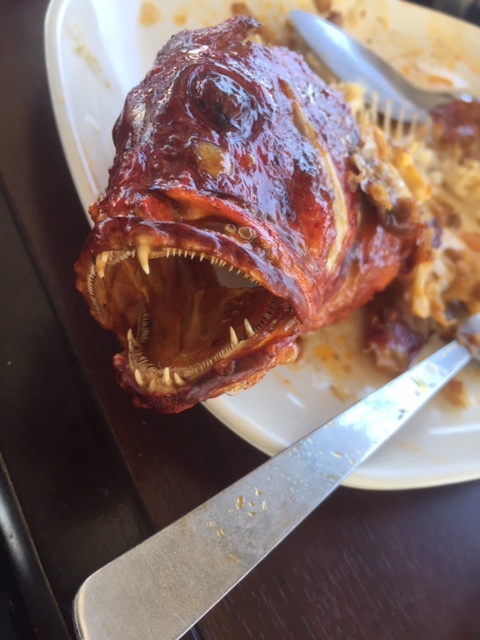Part 20: Ang Pagkaing Pilipino

Ang Pagkaing Pilipino (Filipino Food)
Paul Gerics has already mentioned in a previous blog about the wonderful food we are enjoying here in the Philippines. I want to assure you that we have done more here than eat. But that being said a short blog about Philippine cuisine is in order.
There are few things that appeal to the senses like simple comfort food. Let me also assure you that we have been well comforted! The Philippines has more flavours than it has islands - and that’s saying a lot when there are over seven thousand islands. The Department of Tourism Secretary Bernar Romulo-Puyat shined a spotlight on Filipino food when she wrote, “We believe that one of the best ways to explore the Philippines and experience the country’s culture is through our numerous, unique food offerings.” All of us can say a hearty “Amen” to that.
Now I know what you are thinking. So let me state it up front before you are tempted to exit this blog saying, “O boy, here goes Mahaffey again about the delicious mangoes. Can’t he think of anything else?” No, I am not going to write about the succulent, mouth-watering, finger-licking, absolutely amazing, unbelievable, tastebud-stimulating, stomach craving, honey-like sweetness and addictive making taste of the most incredible and deliciously perfect fruit that God made on the third day of creation. I’ll save that for another time. But let me attempt to describe just a few of the dishes and tastes that gives the Philippines the well deserved acclamation of being one the best places to eat on the planet.
But before I do I must acknowledge that there are some who do not share my opinion. I remember in the early 1980’s when we were newly arrived in the Philippines an American missionary said to us, “Filipinos don’t live to eat, they eat to live.” His comment was meant to convey the truth that the majority of Filipinos at that time lived in poverty and each day experienced a difficult hand-to-mouth existence. But when I first heard this, I honestly felt that something more lurked behind this comment - a carefully veiled American superiorism; an “our food is better than your food” way of thinking. And this from the people who gave the world hot dogs?
For the culturally myopic, all foods except their own are inferior, but for those who celebrate the abundance and variety of all that God in his goodness has given for us richly to enjoy, there is an openness and excitement to taste and to see; to experiment and rejoice in all those things that stimulate our God-given senses.
Because there are 7000 different tastes, I can’t comment on them all so I will give you just a few. Let me begin with bread. The Philippines is not in the same league with European nations when it comes to all edible things that are wheat related. In the bread category, I would give the gold medal to France or Italy, but there is one kind of bread in the Philippines that leaves all other contenders in the dust and that bread is pandesal (pronounced pan-day-sol). Pandesal is only eaten in the mornings and if you don’t get to the local bakery before 7 a.m. there will be none left. Filipinos consume pandesal the way we consume toast at breakfast time, but the best of our toasts can’t compare with pandesal. It is basically the size of a dinner roll with slightly browned exterior but when you bite into it you taste a light, fluffy, warm, sweet bread that leaves you craving for more. Like a potato chip, it’s impossible to just have one. If we could buy pandesal in Canada, I would garnish mine with a thick slice of butter and a blob of Jif Peanut Butter. This would be breakfast perfection. For my second selection, let me take you to the world of snacks and desserts. In this category it is difficult to know where to begin. Paul and Dave enjoyed the deep fried grasshoppers in Banga. Andrea enjoyed the banana chips which were cooked in banana oil and brown sugar. But the all around favourite for all of us on this trip was the buko halo-halo. Buko is the Tagalog word for coconut and halo-halo simply means mix-mix. Yup, you guessed it. This is served in a coconut shell and the ingredients include coconut jelly and milk, along with a mix of cornflakes, gummy bears, crushed ice and a big, big scoop of purple ubi ice cream. Ubi is a delicious root that is purple-coloured and packed full of all kinds of healthy ingredients. The ice cream looks gross, but when it is added to all of the other things, it becomes one of the most refreshing desserts you will ever eat.
For my second selection, let me take you to the world of snacks and desserts. In this category it is difficult to know where to begin. Paul and Dave enjoyed the deep fried grasshoppers in Banga. Andrea enjoyed the banana chips which were cooked in banana oil and brown sugar. But the all around favourite for all of us on this trip was the buko halo-halo. Buko is the Tagalog word for coconut and halo-halo simply means mix-mix. Yup, you guessed it. This is served in a coconut shell and the ingredients include coconut jelly and milk, along with a mix of cornflakes, gummy bears, crushed ice and a big, big scoop of purple ubi ice cream. Ubi is a delicious root that is purple-coloured and packed full of all kinds of healthy ingredients. The ice cream looks gross, but when it is added to all of the other things, it becomes one of the most refreshing desserts you will ever eat. The sea food category will be my final selection. Here again there are so many delicious options to choose from. Grilled Bangus (milk fish) is to die for and it is enjoyed all through the Philippine islands. On this trip, we stopped again at the port in General Santos City, the tuna fishing capital of the world, to see fisherman carrying 150 pound yellowfin tuna from their boats to be weighed and inspected before heading to factories to be canned or placed in large refrigerated containers to be shipped to Japan. The tuna steaks we enjoyed at a restaurant looking out over Sarangani Bay were grilled to perfection. But for me the tastiest fish of all was the grilled red Lapu-Lapu. This snapper like delicacy has a light fluffy white flesh that falls easily off the bones and, eaten with rice and soy sauce, leaves a wonderful aftertaste in the mouth. The Lapu-Lapu eyes are crunchy and salty - great to eat after eating its sweet flesh! But the eater must be careful to avoid the Lapu-Lapu’s sharp teeth which can easily draw blood.
The sea food category will be my final selection. Here again there are so many delicious options to choose from. Grilled Bangus (milk fish) is to die for and it is enjoyed all through the Philippine islands. On this trip, we stopped again at the port in General Santos City, the tuna fishing capital of the world, to see fisherman carrying 150 pound yellowfin tuna from their boats to be weighed and inspected before heading to factories to be canned or placed in large refrigerated containers to be shipped to Japan. The tuna steaks we enjoyed at a restaurant looking out over Sarangani Bay were grilled to perfection. But for me the tastiest fish of all was the grilled red Lapu-Lapu. This snapper like delicacy has a light fluffy white flesh that falls easily off the bones and, eaten with rice and soy sauce, leaves a wonderful aftertaste in the mouth. The Lapu-Lapu eyes are crunchy and salty - great to eat after eating its sweet flesh! But the eater must be careful to avoid the Lapu-Lapu’s sharp teeth which can easily draw blood.
 You won’t be able to enjoy any of these things in Canada unless you find a Filipino restaurant close by. But even then it won’t be the same because as the Philippine Department of Tourism advertises, “It’s Better in the Philippines.” And again we say “Amen” to that.
You won’t be able to enjoy any of these things in Canada unless you find a Filipino restaurant close by. But even then it won’t be the same because as the Philippine Department of Tourism advertises, “It’s Better in the Philippines.” And again we say “Amen” to that.
- John
More in West Highland Church
March 2, 2022
Daily Devotional #15March 1, 2022
Daily Devotional #14February 28, 2022
Daily Devotional #12